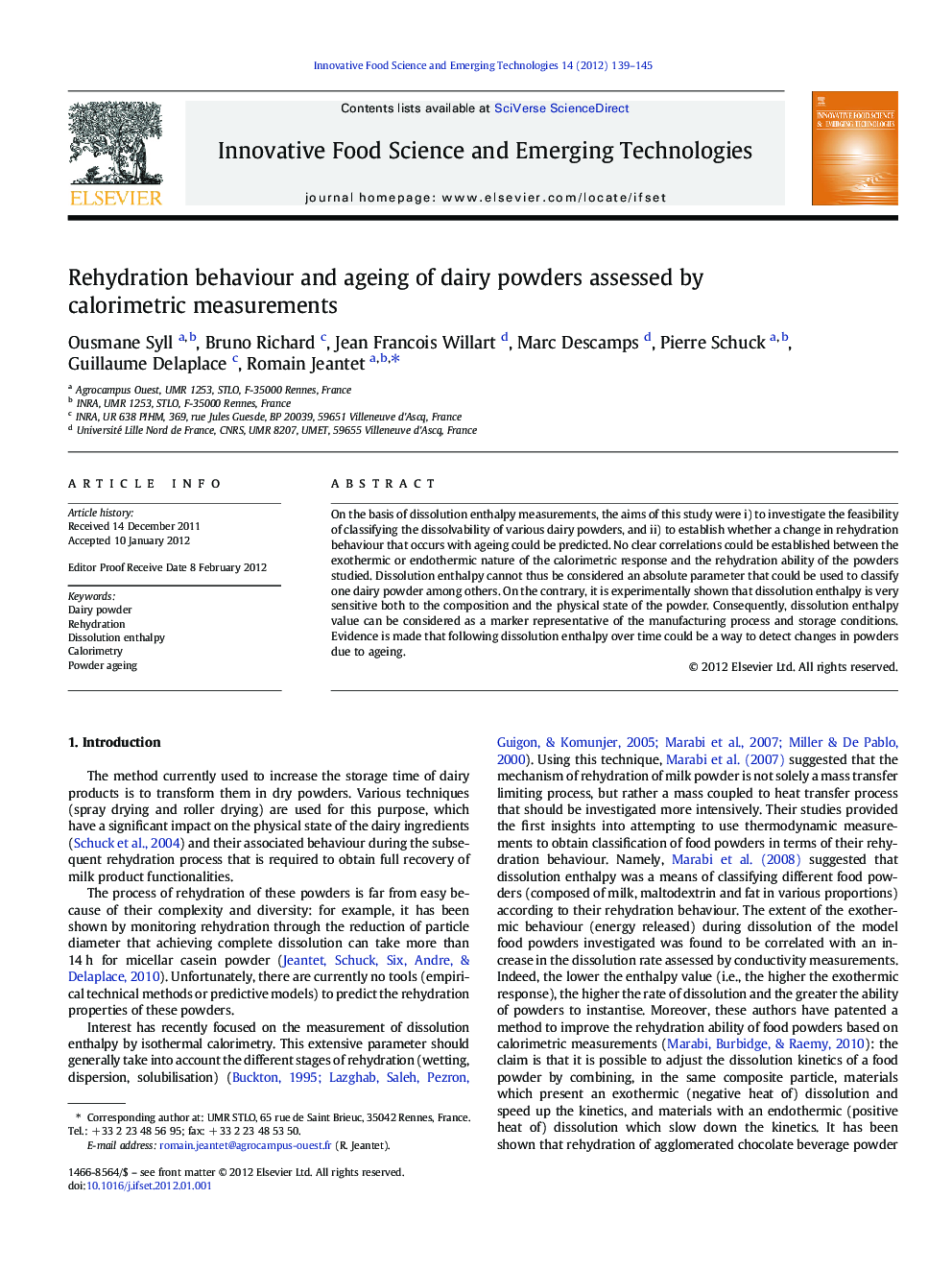| Article ID | Journal | Published Year | Pages | File Type |
|---|---|---|---|---|
| 2086924 | Innovative Food Science & Emerging Technologies | 2012 | 7 Pages |
On the basis of dissolution enthalpy measurements, the aims of this study were i) to investigate the feasibility of classifying the dissolvability of various dairy powders, and ii) to establish whether a change in rehydration behaviour that occurs with ageing could be predicted. No clear correlations could be established between the exothermic or endothermic nature of the calorimetric response and the rehydration ability of the powders studied. Dissolution enthalpy cannot thus be considered an absolute parameter that could be used to classify one dairy powder among others. On the contrary, it is experimentally shown that dissolution enthalpy is very sensitive both to the composition and the physical state of the powder. Consequently, dissolution enthalpy value can be considered as a marker representative of the manufacturing process and storage conditions. Evidence is made that following dissolution enthalpy over time could be a way to detect changes in powders due to ageing.
► Dissolution enthalpy and rehydration kinetics of dairy powders were evaluated. ► Presence of amorphous material accelerates the dissolution process of dairy powder. ► Dissolution enthalpy depends on powder composition and components physical state. ► Slow in dissolution kinetics during ageing can be assessed by dissolution enthalpy.
